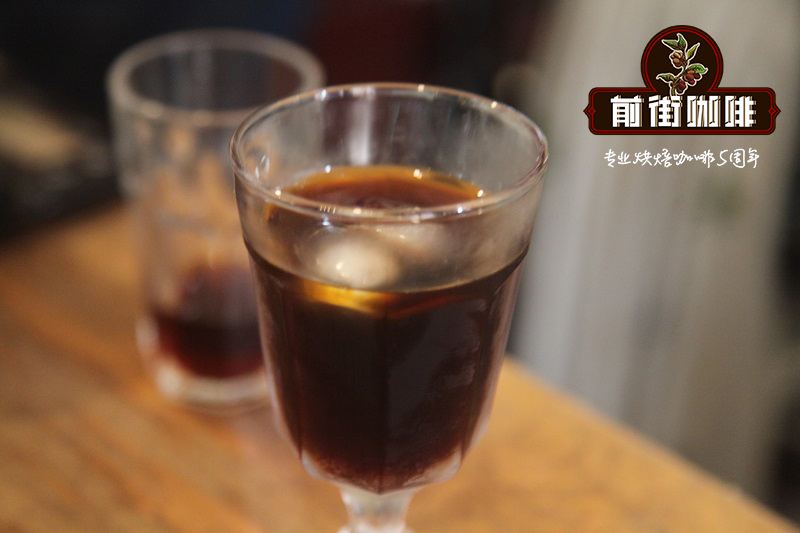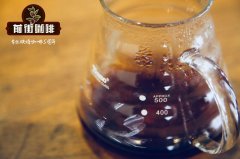What is golden honey treatment? does the degree of golden honey treatment directly depend on the amount of pectin retained?

Professional coffee knowledge exchange more coffee bean information please follow the coffee workshop (Wechat official account cafe_style)
Honey treatment is almost synonymous with Costa Rica!
Honey treatment was first born to improve the fermented water washing method, which has a history of hundreds of years; there are two kinds of water washing methods, one is the traditional water washing method, and the other is to scrape off the pectin layer adhered to the surface of coffee seeds mechanically, and the shell beans will be as clean as fermented beans. After the subsequent exposure, the dried beans will show a pale yellowish color, which is not much different from the traditional washed beans, so it is also known as "mechanical washing beans".
However, if you scrape off the pectin layer and make some minor adjustments, such as retaining part or complete pectin layer, and then drying it, it will become the so-called honey treatment. These nutrient-rich pectin layers will seep into the beans through sun browning and fermentation, making the subsequent flavor more sweet. After years of experiments, farmers found that more browning helps to improve sweetness, and the more pectin, the more browning potential, which leads to the distinction between white, yellow, red and black honey treatment.
Does the degree of honey treatment directly depend on the amount of pectin retained?
In fact, this is not always the case, and the golden honey treatment is the best example. The "golden yellow" treated with golden honey refers to the golden color of shell beans exposed to the sun, that is, the color of dried pectin that is not browned or fermented.
Golden honey treatment and black honey treatment, completely retain the pectin layer, but the biggest difference is that the exposure process of black honey treatment should pay great attention to temperature and drying speed, and strive to dry in a low temperature, dry and cold environment. So that the nutrients of the pectin layer have no opportunity to browning and fermentation, only let the nutrients of the original pectin layer concentrate and then seep back into the raw bean, so there is no flavor substance that should have. On the contrary, it is treated with golden honey, because after browning and fermentation, the pectin layer can really seep into the raw beans. Therefore, the degree of honey treatment depends not so much on pectin retention, but on the browning of pectin layer and the degree of fermentation.
Golden honey treatment is named after the beautiful golden yellow color of shell beans exposed to the sun.
And this brilliant golden color is the color of unbrowned and unfermented dried pectin. To put it simply in principle, the golden honey treatment is the same as the black honey treatment, which adopts the way of completely retaining the pectin layer.
However, the biggest difference with black honey treatment is that it pays great attention to temperature and drying rate in the process of exposure and drying, and strives to dry in a low temperature, dry and cold environment, so that the nutrients of the pectin layer do not have the opportunity to brown and ferment!
This kind of honey treatment does not have the flavor substances of browning and fermentation, but only the effect that the nutrients of the original pectin layer are concentrated and then seeped back into the raw bean.
This phenomenon shows that the degree of honey treatment does not depend on the amount of pectin retained, but more on the degree of browning and fermentation of pectin layer-but the more the amount of pectin, the higher the potential of honey treatment.
Important Notice :
前街咖啡 FrontStreet Coffee has moved to new addredd:
FrontStreet Coffee Address: 315,Donghua East Road,GuangZhou
Tel:020 38364473
- Prev

Always fail to pull flowers in coffee? Maybe you haven't noticed the following points.
Professional coffee knowledge exchange more coffee bean information please follow the coffee workshop (Wechat official account cafe_style) pour out the milk foam, in the coffee surface to form a beautiful pattern ── this is Latte Art, one of the most fancy technology in espresso. But in the actual operation, I found that it is not so simple and easy. First of all, what is the layer of flower floating on the surface of the coffee?
- Next

Golden honey treatment black honey treatment difference between what is golden honey treatment and why there are so many honey treatments
Professional coffee knowledge exchange more coffee bean information Please pay attention to the coffee workshop (Wechat official account cafe_style) Golden honey treatment and black honey treatment, completely retain the pectin layer, but the biggest difference is that the exposure process of black honey treatment should pay great attention to the temperature and drying speed, and strive to dry in a low temperature, dry and cold environment, so that the nutrients of the pectin layer do not have the opportunity to brown and ferment.
Related
- What is the meaning of lactic acid fermentation with coffee bean treatment?
- How to judge the state of foam by sound?
- How does the latte pull out the unicorn pattern? Come to get for a little trick to improve the flower pull!
- Will flower pulling affect the taste of the latte?
- Do you know the history of coffee?
- The difference between honey treatment and sun washing what is raisin honey treatment?
- What kind of milk can a novice use to make coffee foam to keep the foam longer? The correct method and skills of milking tutorial sharing
- Why do washed coffee beans taste sour? Flavor characteristics of washed Coffee
- Introduction to the skill of how to practice the size and height of water injection around the circle of hand-brewed coffee
- How do beginners practice coffee flower drawing from scratch?

